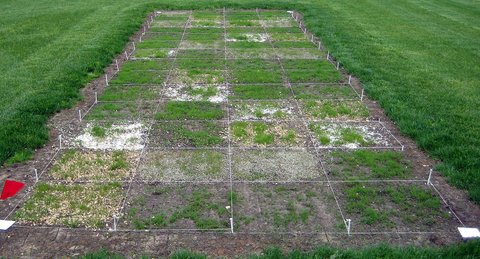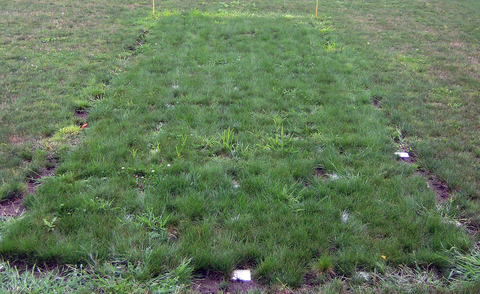We often see dead patches or bare spots as the snow disappears and lawns green up. This can be caused by a number of winter stresses. If patches are greater than a few inches wide, recovery will require the addition of seed or sod. Consider the following when choosing retail-available products or DIY approaches to patching these areas.
Avoid seed mixes dominated by perennial ryegrass
Patch and repair mixtures include grass seed. Perennial ryegrass (Lolium perenne) is often the dominant grass type in the products, due to its fast germination and ability to create quick green cover. A lawn made up of predominantly perennial ryegrass is not a good choice because this grass is not winter hardy.
Better grasses for Minnesota lawns are fine fescues (Festuca spp.), tall fescues (Festuca arundinacea), and Kentucky bluegrasses (Poa pratensis).
Include a mulch material
Research comparing patch and repair products with fine fescue grass seed showed that products with compost can speed up establishment.
Mulches like compost or potting soil help retain moisture, prevent soil erosion, and insulate against air temperature fluctuations.
Mulches with a high carbon to nitrogen ratio, like wood chips or shredded paper, may require additional fertilizer inputs during establishment.
Learn more about mulch and compost.
Provide adequate moisture
The aforementioned research also showed that if fine fescue seed is properly irrigated, mulches may not be necessary. Water new seed on a light and frequent schedule, applying water several times a day for 2 weeks. Do not irrigate during rainfall events.
Braun, RC, Patton, AJ, Braithwaite, ET, Kowalewski, AR. Establishment of low‐input turfgrass from seed with patch and repair mixtures: Mulch and starter fertilizer effects. Crop Science. 2020; 60: 3362– 3376. https://doi.org/10.1002/csc2.20266



